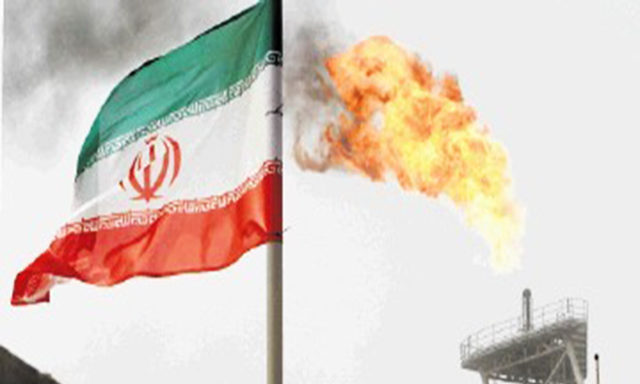
About the only surprise to come from OPEC’s decision on June 5 to leave oil output unchanged was that everyone got along.
“I have been in OPEC for some many years, and it is the first time I had seen this,” OPEC Secretary-General Abdalla El-Badri said after the meeting.
“Very, very positive.”
Last November, when the Organization of Petroleum Exporting Countries introduced its strategy of maintaining production to take market share from higher-cost producers, the group’s weaker members like Venezuela argued for a cut to boost prices.
This time, even they were supportive amid signs the strategy is working.
At a crucial moment in its history, the organization that has long suffered from internal strife managed to swiftly reach consensus.
For one meeting, at least, points of contention were better left unsaid or papered over — as when Iran’s demand to make room for its increased output met with silence, according to a person briefed on the meeting.
Inside OPEC’s headquarters — a gray, boxy building in central Vienna — representatives from the 12 member countries gathered June 5 around a rectangular table in a small conference room, their places marked with little national flags.
The central figure in OPEC’s strategy has been Ali al-Naimi, the longtime oil minister from the group’s biggest producer, Saudi Arabia.
It was his first OPEC meeting since the kingdom’s political reshuffling following the the death of King Abdullah and accession of King Salman Bin Abdulaziz Al Saud in January.
Naimi, upon arriving in Vienna last week, said the November strategy was working. But it was Suhail Mohammed Al Mazrouei, the energy minister of the United Arab Emirates, who spoke first in the meeting to express support, according to a person briefed on the proceedings.
There were no dissenters, the person said.
Even Venezuela, which is in an economic crisis and had been calling for an emergency meeting, termed the decision the best available.
“I think it’s been a very successful meeting,” Oil Minister Asdrubal Chavez told reporters after the session.
“There’s a total solidarity between all our countries.”
They could take comfort in a 33 percent rally in oil prices since January, a 60 percent drop in U.S. drilling rigs since October, a decline last month in production from American shale oil wells, and billions of dollars of shelved investments by the world’s biggest oil companies.
“The heat is off a bit since prices have come up so they’re in a much better place in a lot of ways,” said Robin Mills, a Dubai-based analyst at Manaar Energy Consulting.
Brent for July settlement slid 55 cents to $62.76 a barrel on the London-based ICE Futures Europe exchange at 12:21 p.m. Singapore time.
So the target stayed at 30 million barrels a day, as all but one of 34 analysts surveyed by Bloomberg forecast.
Yet the group has exceeded the output target for 12 straight months. The delegates agreed they should comply, but didn’t discuss precisely how to do that, according to the person briefed on the meeting.
Individual quotas weren’t discussed, Mohammed Al Sada, Qatar’s energy and industry minister, said.
Each individual member has an incentive to sell as much oil as possible, and several, in particular Iraq, Iran and Libya, were vocal last week about plans to expand production.
There wasn’t even any debate when Iran’s oil minister, Bijan Namdar Zanganeh, presented a letter, urging OPEC to make way for his country to pump 4 million barrels a day, back to the level of about 2008 before Western sanctions intensified.
Iran produced 2.8 million barrels a day in May, according to data compiled by Bloomberg.
Ministers, including Naimi, showed little reaction, according to two persons briefed.
The issue could be addressed at the next meeting, Badri told Bloomberg TV.
In June 2011, Naimi left a gathering and called it “the worst meeting ever.” This time: “The most amicable,” he said.
Recommended for you
